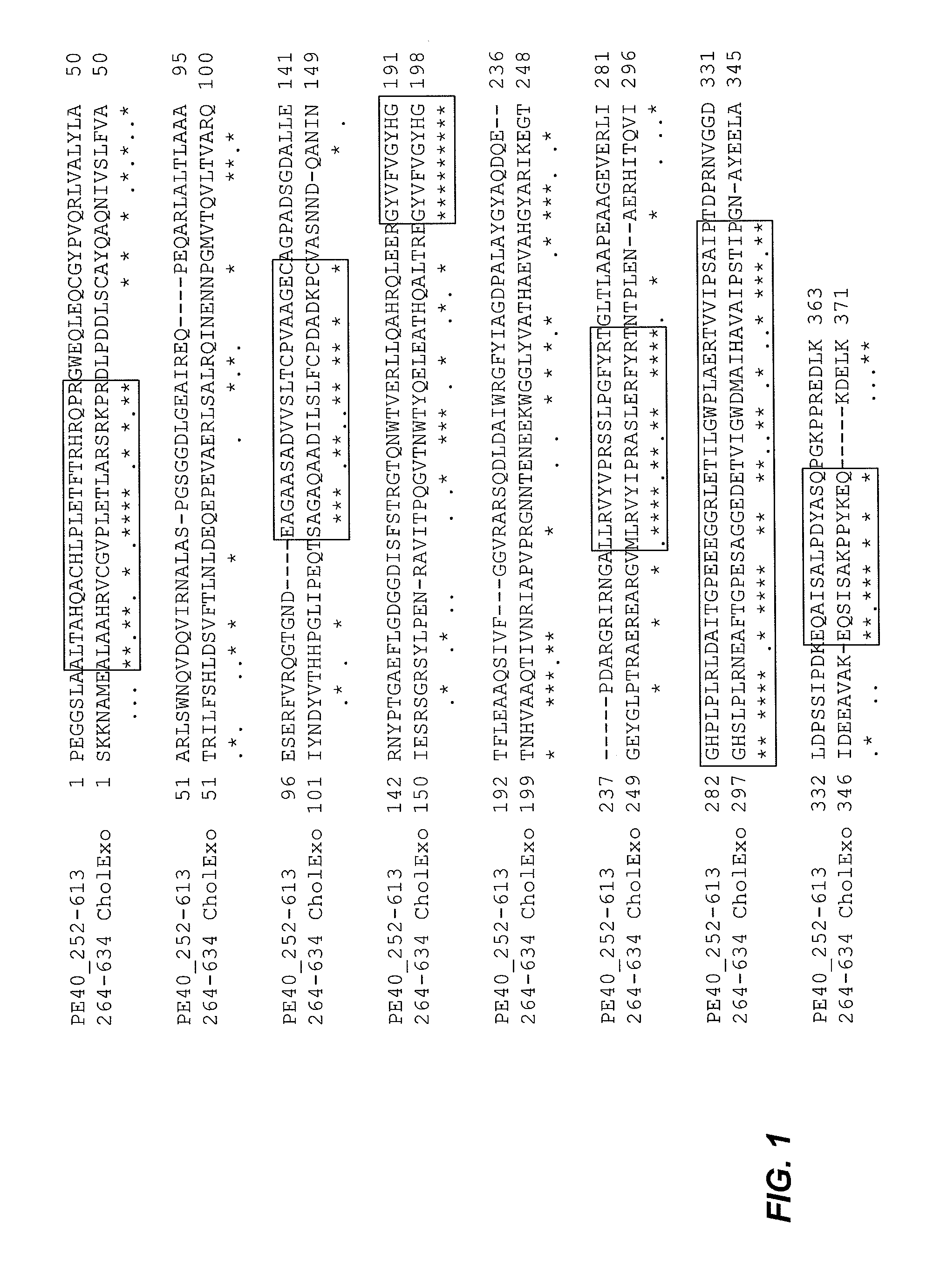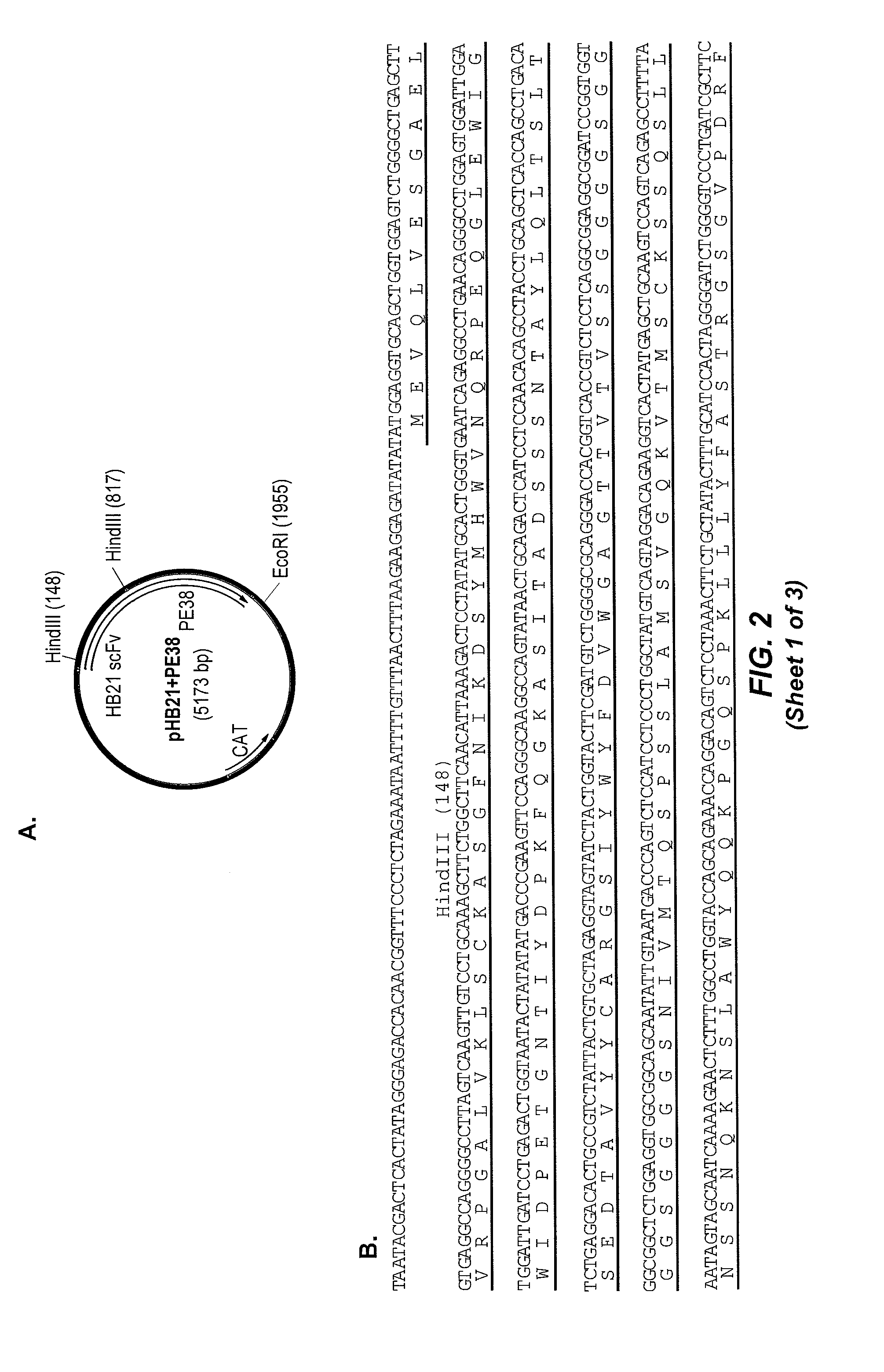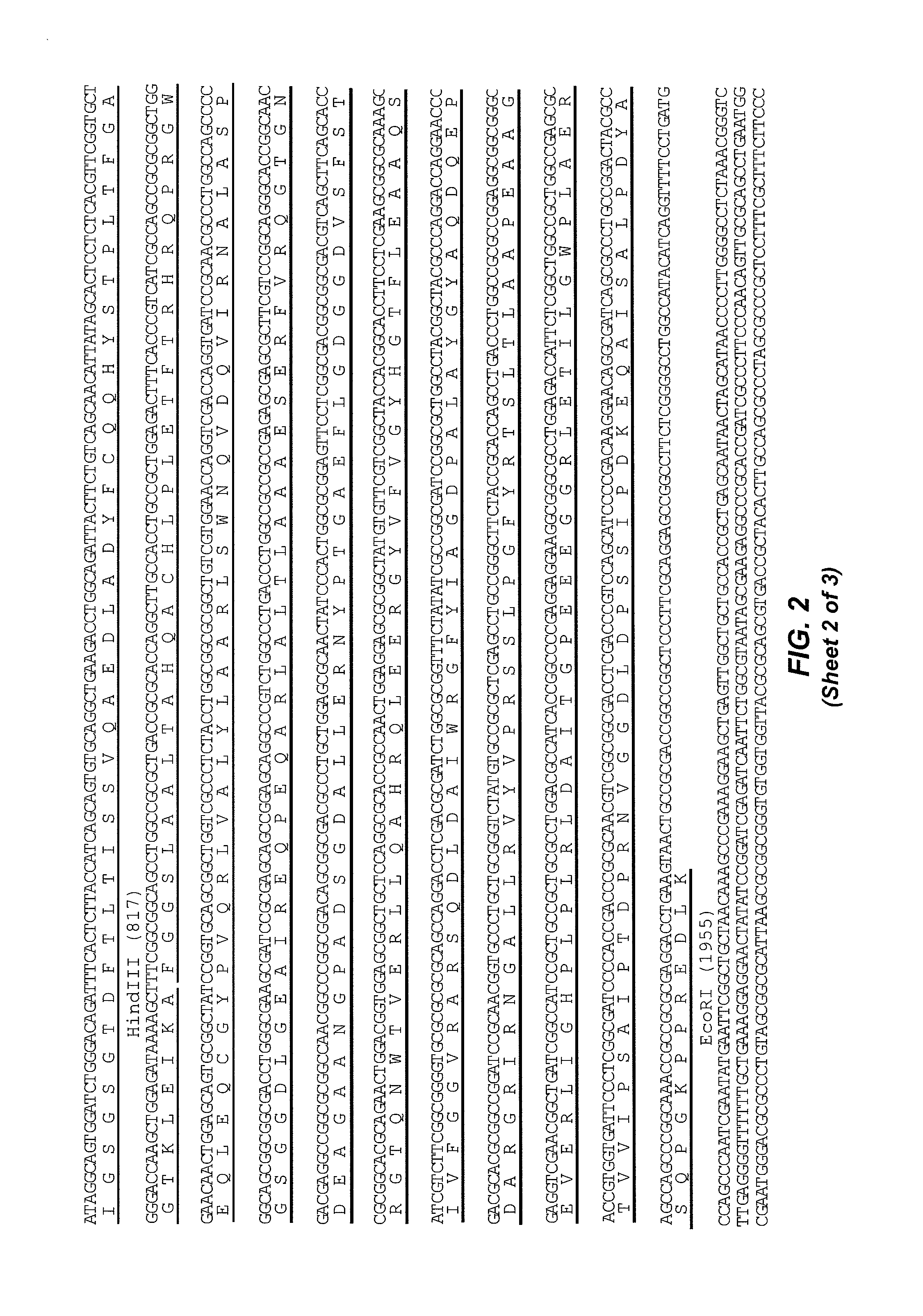Immunotoxins and uses thereof
a technology of immunogenicity and toxins, applied in the field of toxins and targeted toxins, can solve the problems of reducing the ability of practitioners to slow or stop the progression of disorders, reducing the ability of practitioners to achieve immunogenicity, and reducing the effect of toxicity
- Summary
- Abstract
- Description
- Claims
- Application Information
AI Technical Summary
Benefits of technology
Problems solved by technology
Method used
Image
Examples
example 1
General
[0353]Surprisingly, the studies underlying the invention show that the PE and CT toxins are functionally similar, but immunologically distinct. Despite the sequence and structural similarities noted above, none of the anti-PE polyclonal or monoclonal antibodies tested in the studies underlying the present invention have neutralized, or even significantly affected, the ability of CT-based immunotoxins to kill targeted cells.
[0354]A series of studies were conducted creating immunotoxins employing an exemplar antibody, an anti-transferrin receptor antibody known as HB21, and a population of human DLD-1 colon carcinoma cells, which express the transferrin receptor.
[0355]a) Preparation of Inclusion Bodies (IB)
[0356]Frozen cells (up to 10000 OD units) were resuspended in 25 ml of TE 50 / 20 (mM / mM, pH 8.0) and dispersed using a tissuemizer, a laboratory blender. Cells were then lysed with the addition of chicken egg white lysozyme (Sigma) to a final concentration of 200μg / ml for 1 hr...
example 2
Construction and Characterization of CET40 Immunotoxins
[0378]Evidence that certain strains of Vibrio cholerae encode an exotoxin similar to PE from Pseudomonas has been supported by: tissue culture experiments, bioinformatic comparisons of sequenced genomes and direct structural comparisons of the two toxins (Jorgensen et al., 2008, J Biol Chem 283:10671-8; Purdy et al., 2005, J Bacteriol 187:2992-3001; Dalsgaard et al., 1995, J Clin Microbiol 33:2715-22). Herein the functional similarity was confirmed by showing that domains II and III of CET can be used to generate immunotoxins with cell killing activities roughly equivalent to that of PE-based proteins. While a role for cholera exotoxin in contributing to human disease has not been firmly established, at least one report documents an outbreak of diarrhea caused by Vibrio cholerae isolate (strain 1587) that was negative for the structural genes encoding classical cholera toxin and positive for the CET (Dalsgaard et al., 1995, J Cl...
example 3
Construction of PE40 Immunotoxin
[0382]For comparison, HB21 was separately cloned into a vector containing the cDNA encoding the 40 kD cytotoxic fragment of Pseudomonas exotoxin A known as “PE40” to create the recombinant immunotoxin HB21-PE40. A pBR322-based expression vector, pRB2506, encoding HB21scFv-PE40 was provided by Richard Beers and Ira Pastan.
[0383]Original Pseudomonas exotoxin-based immunotoxins were constructed with domains II and III together with the subdomain termed domain Ib and were called PE40 (Chaudhary et al., 1989, Nature 339:394-7). However, recent iterations have been made with a deletion of a portion of domain Ib (amino acids 365-380) and are termed PE38 (Brinkmann et al., 1991, Proc Natl Acad Sci USA 88:8616-20).
PUM
| Property | Measurement | Unit |
|---|---|---|
| concentrations | aaaaa | aaaaa |
| concentrations | aaaaa | aaaaa |
| average bond energy | aaaaa | aaaaa |
Abstract
Description
Claims
Application Information
 Login to View More
Login to View More - R&D
- Intellectual Property
- Life Sciences
- Materials
- Tech Scout
- Unparalleled Data Quality
- Higher Quality Content
- 60% Fewer Hallucinations
Browse by: Latest US Patents, China's latest patents, Technical Efficacy Thesaurus, Application Domain, Technology Topic, Popular Technical Reports.
© 2025 PatSnap. All rights reserved.Legal|Privacy policy|Modern Slavery Act Transparency Statement|Sitemap|About US| Contact US: help@patsnap.com



